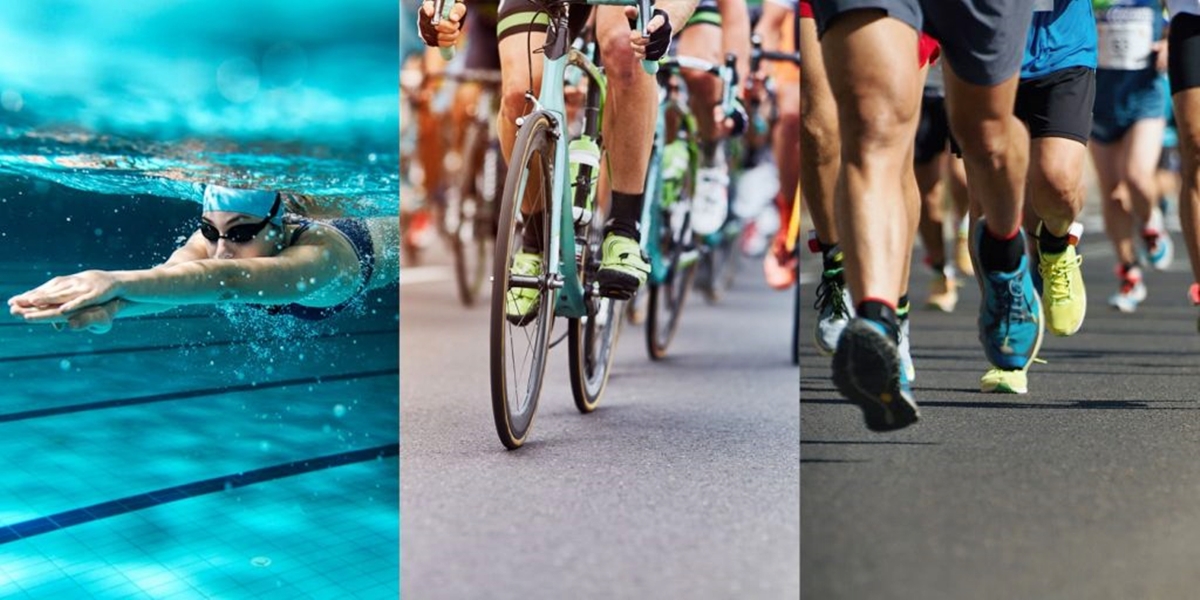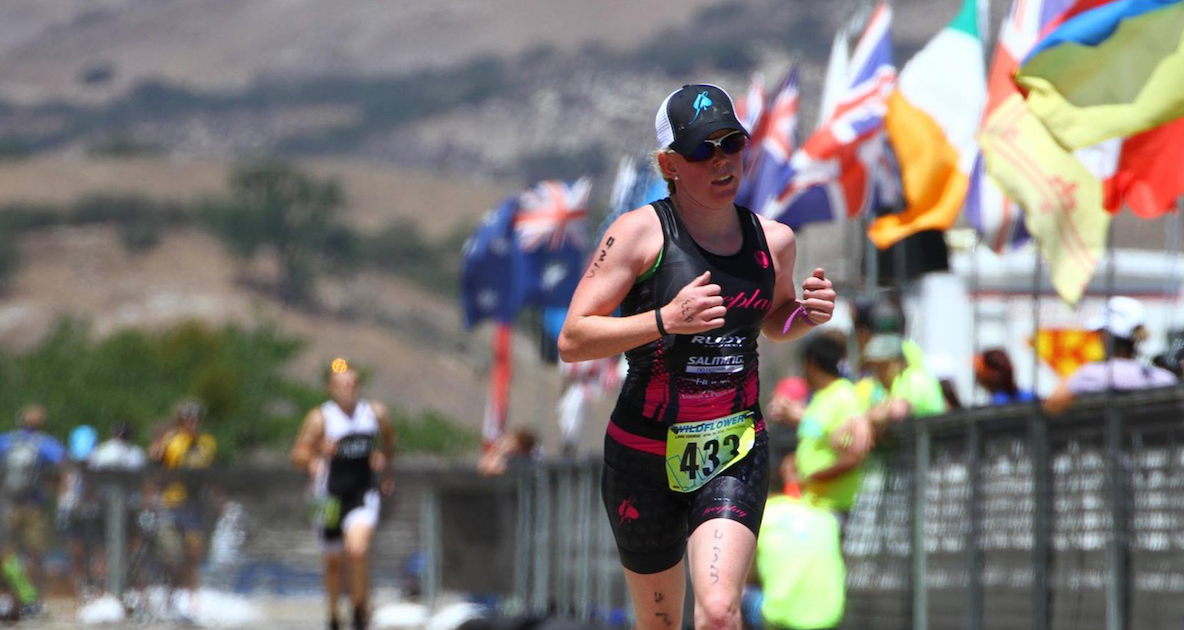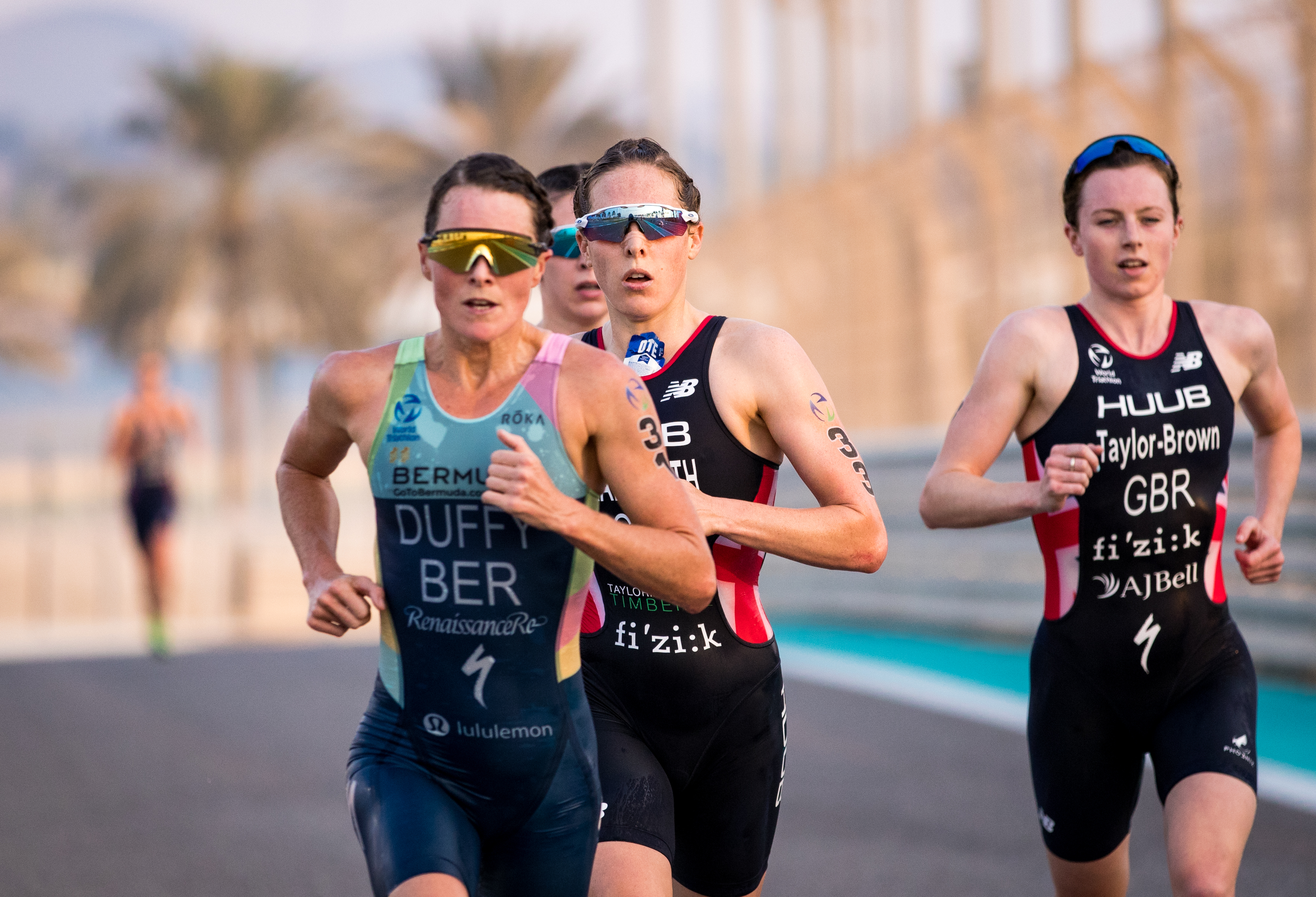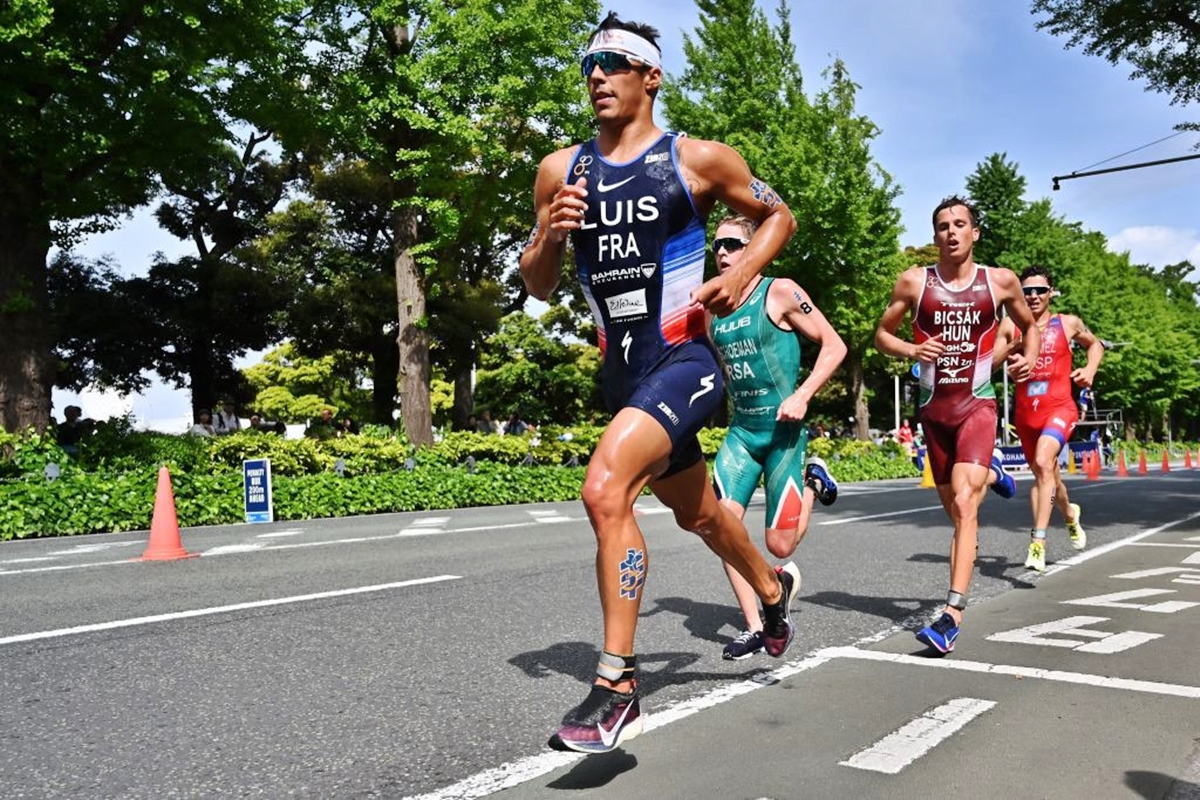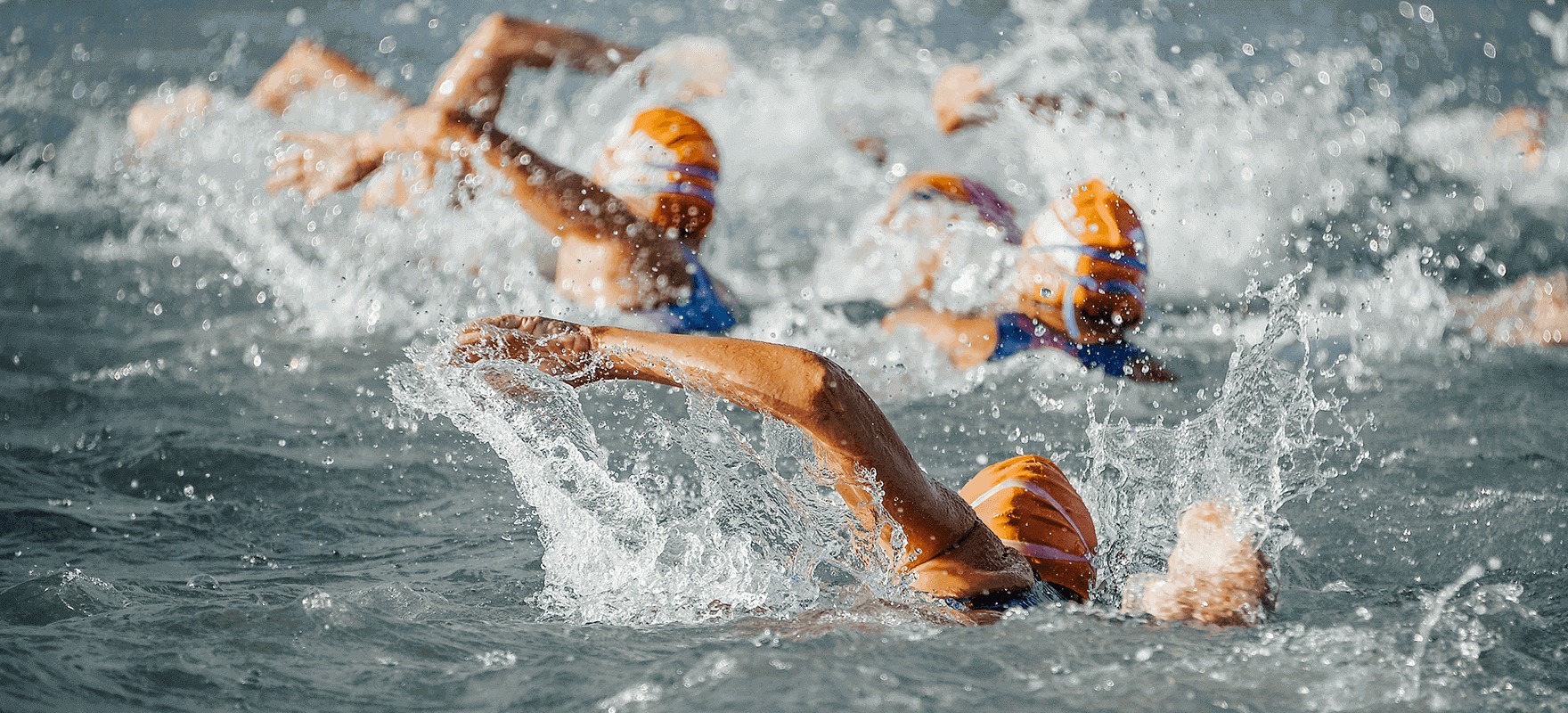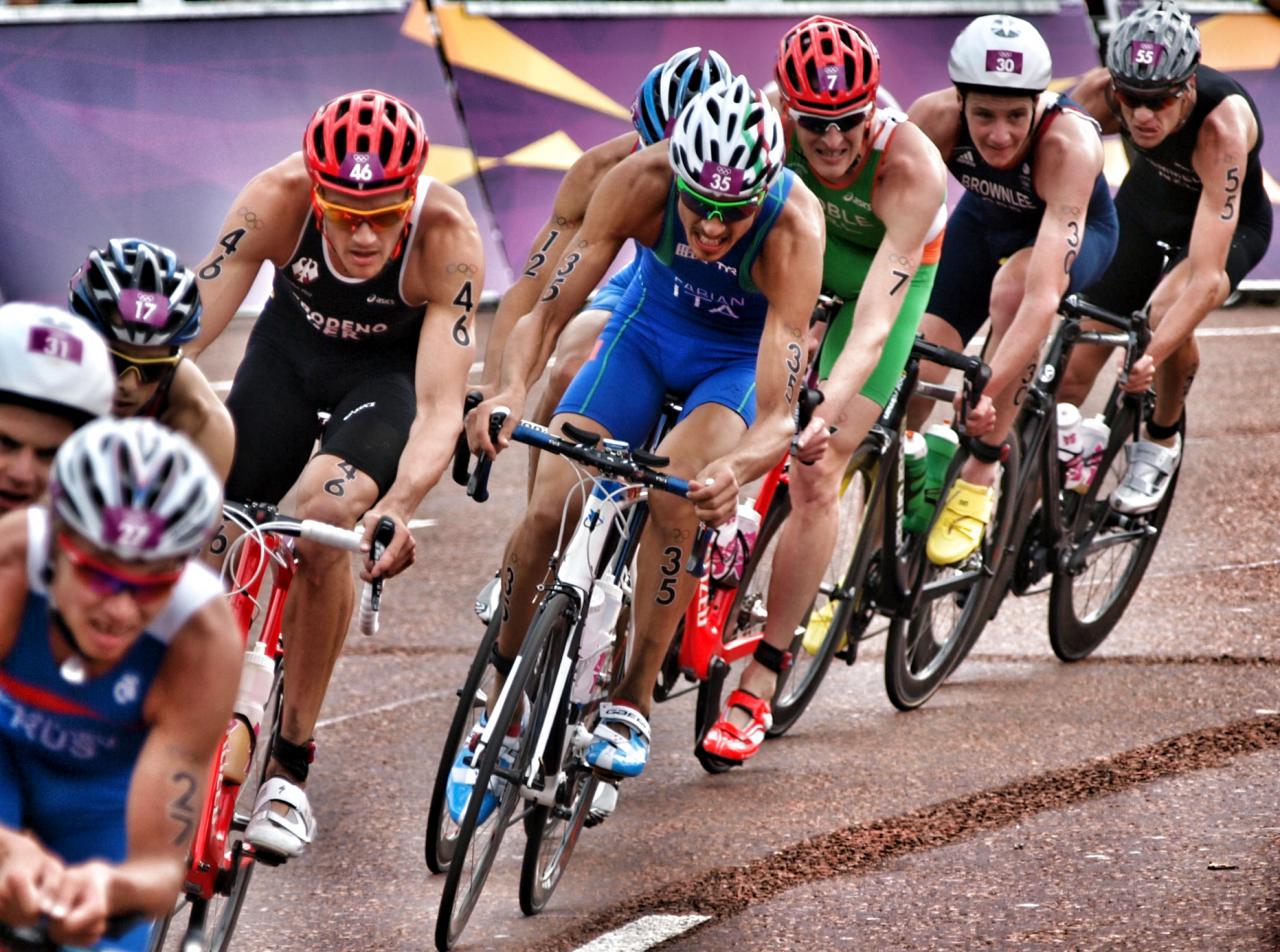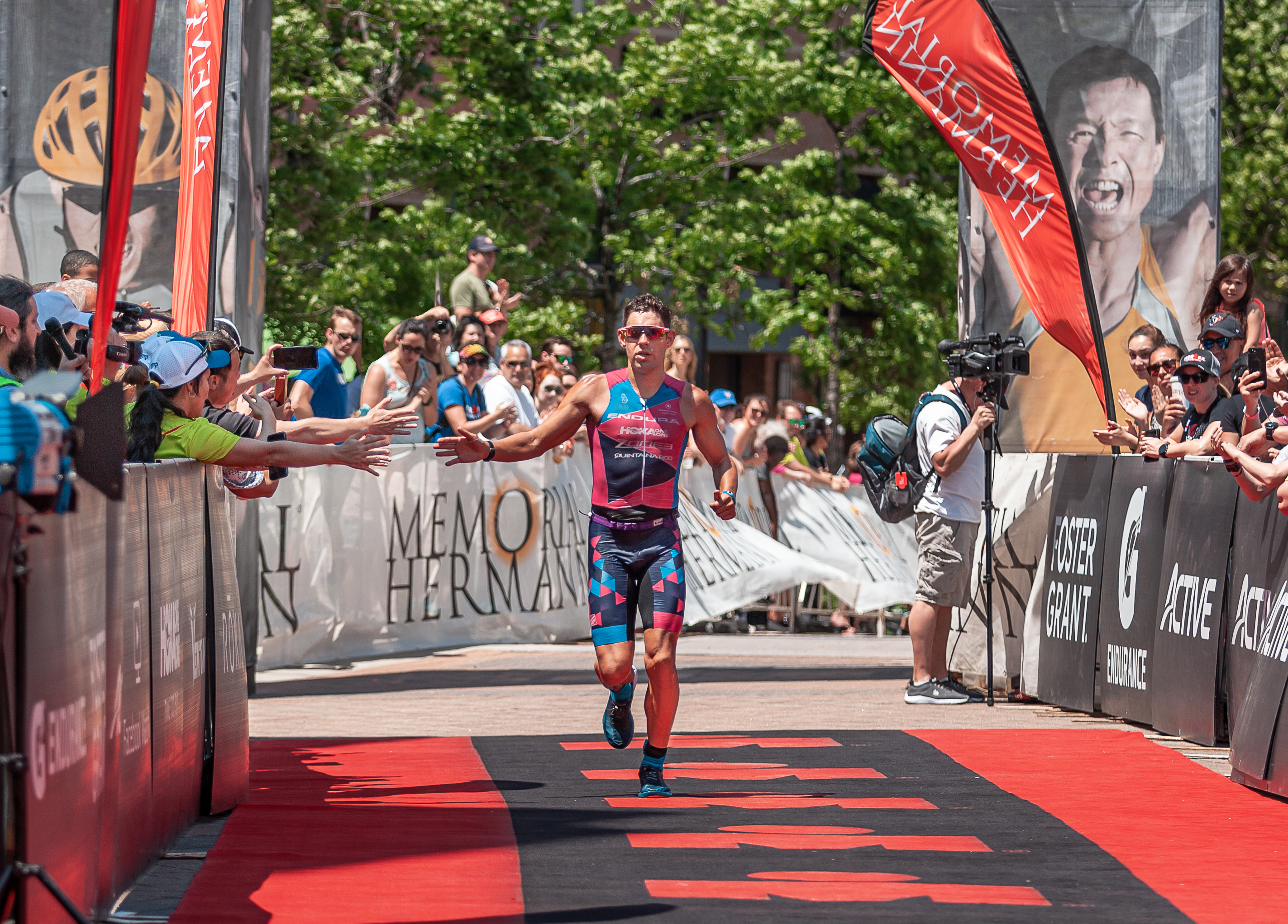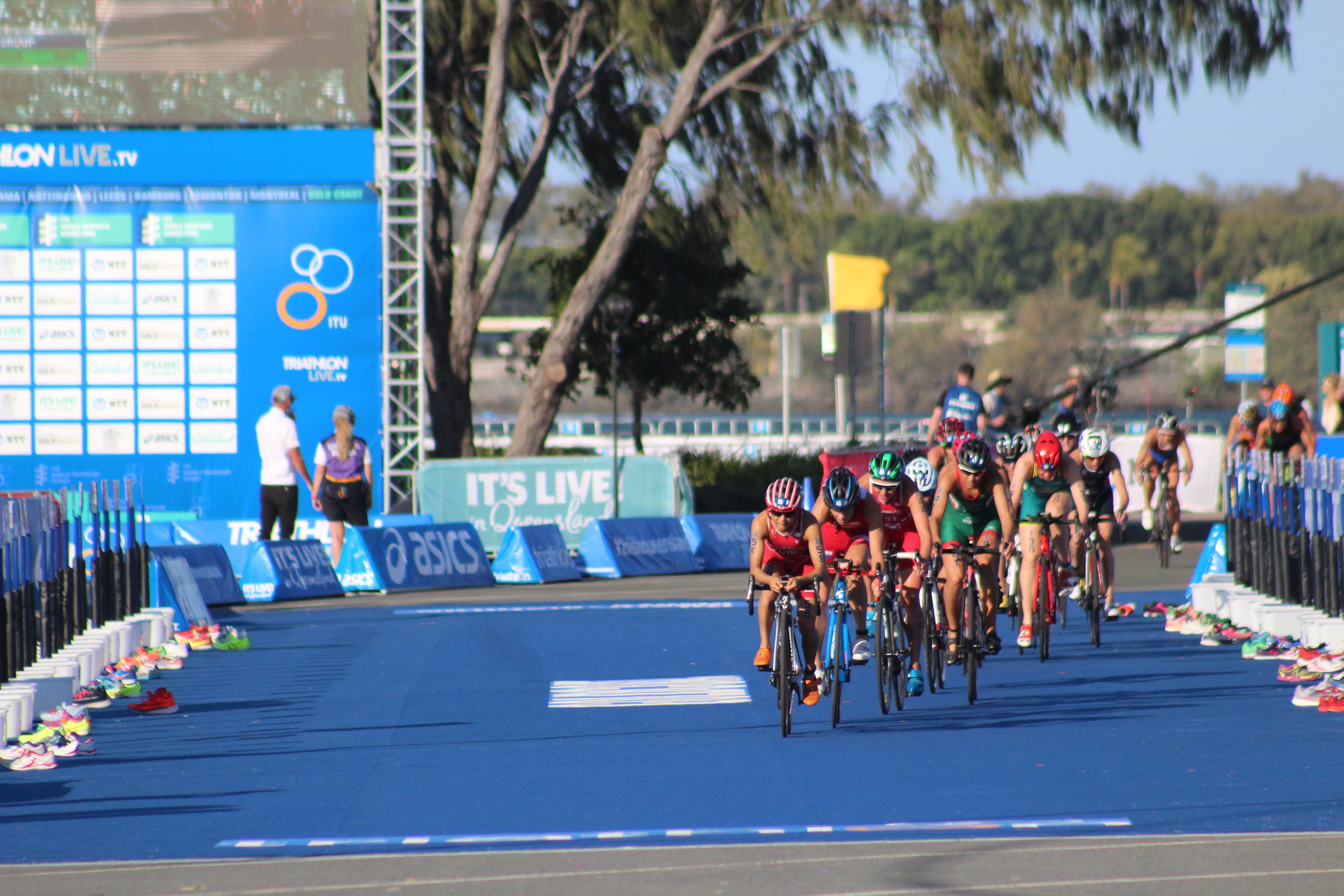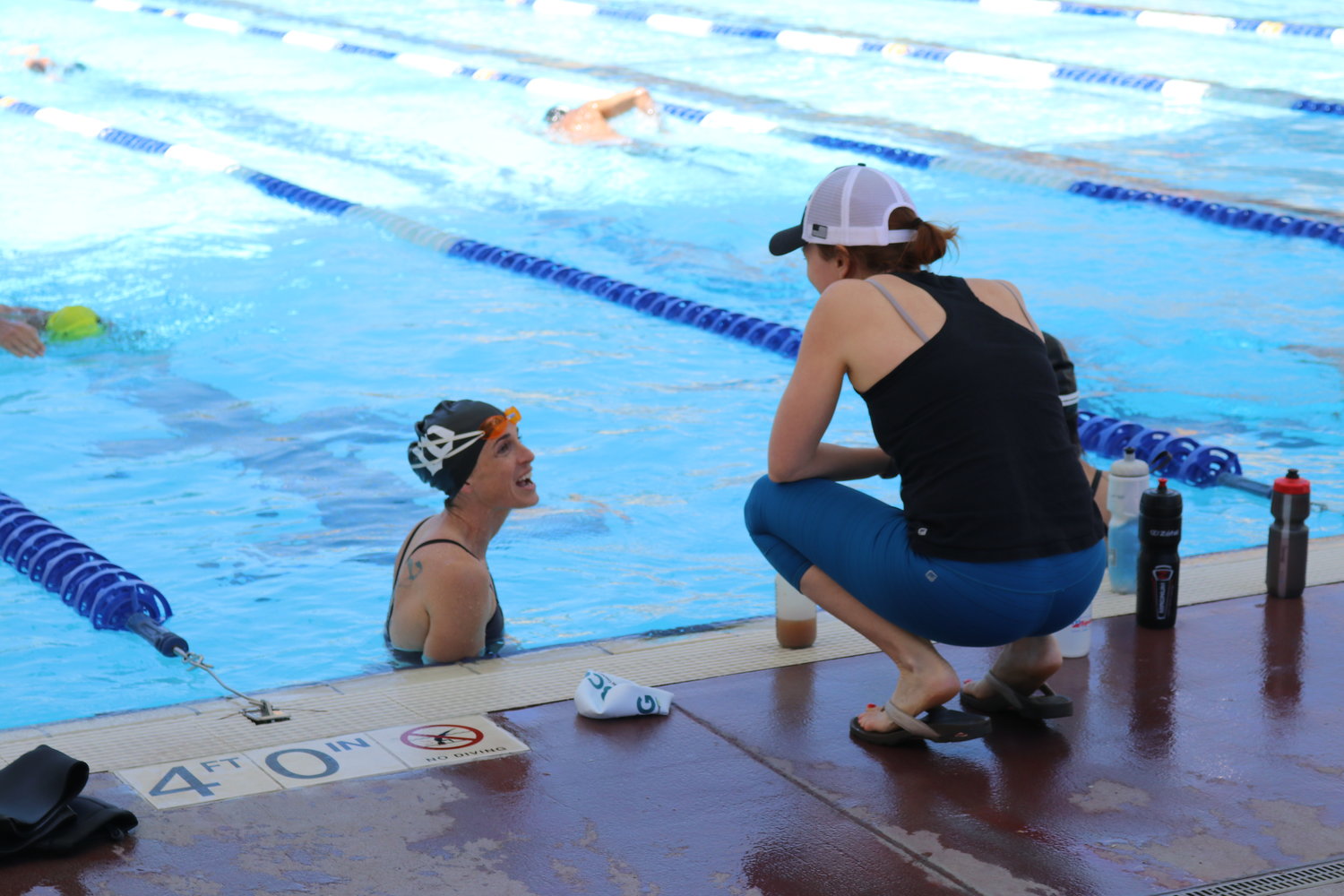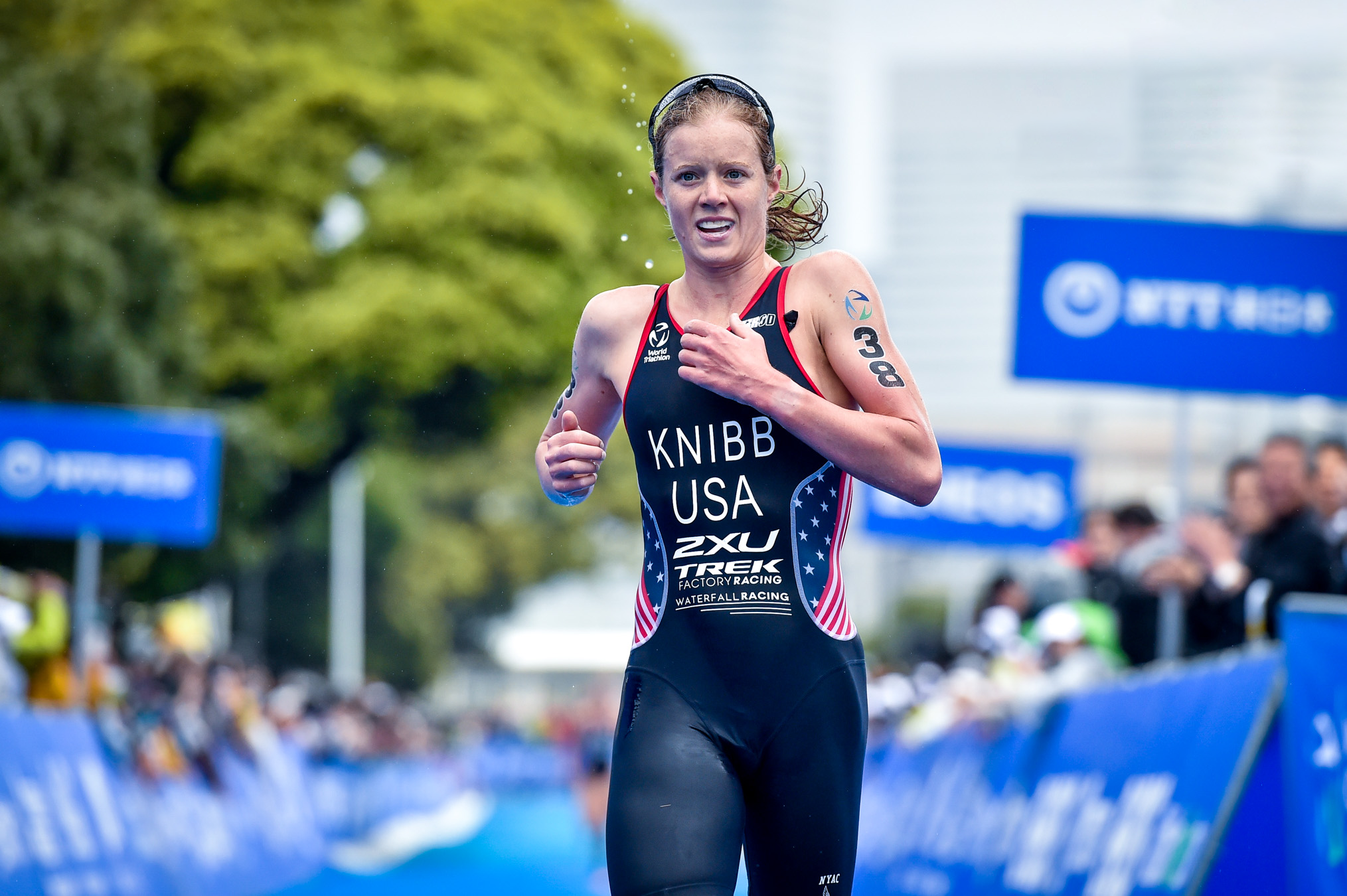

Featured
How To Get A Triathlon Elite
Modified: January 2, 2024
Learn the secrets to becoming a triathlon elite with our featured guide. Discover proven strategies, training tips, and nutrition advice to dominate the competition.
Introduction
Are you an aspiring triathlete looking to take your skills to the next level? Becoming a triathlon elite requires a combination of physical prowess, mental discipline, and strategic training. Whether you’re a seasoned triathlete aiming to compete at the professional level or a beginner looking to make a mark in the sport, this comprehensive guide will provide you with valuable insights and tips to help you achieve your goals.
Triathlon is a demanding multi-sport discipline that includes swimming, cycling, and running. Competing at the elite level requires a high level of endurance, speed, and proficiency in each individual sport, as well as the ability to seamlessly transition between them. It’s a thrilling and challenging adventure that pushes your limits and rewards you with a sense of accomplishment unlike any other.
One of the crucial factors in your journey to becoming a triathlon elite is finding the right coach. A qualified coach will provide guidance, structure, and expertise to help you navigate the intricate world of triathlon training. They will develop a customized training plan that aligns with your goals and abilities, while also challenging you to push beyond your comfort zone.
Creating a well-rounded training plan is another fundamental step in your quest for triathlon excellence. It involves carefully balancing the three disciplines – swimming, cycling, and running – while also incorporating strength and conditioning workouts. A well-structured training plan includes a combination of interval training, endurance workouts, and recovery sessions to optimize your performance and prevent overtraining.
Developing proper swim technique is essential for triathlon success. The swim leg is often the most challenging for many athletes, particularly those with a background in cycling or running. Working with a swim coach can help you refine your stroke mechanics, improve your efficiency in the water, and increase your overall swim speed.
Mastering cycling skills is another crucial aspect of becoming a triathlon elite. Efficiency, power output, and bike handling abilities play a pivotal role in achieving success in the cycling leg. Learning how to efficiently climb hills, maintain a steady cadence, and navigate technical descents can give you a significant advantage in a race.
Finding the Right Coach
Finding the right coach is one of the most important steps in your journey to becoming a triathlon elite. The guidance and expertise of a qualified coach can make a world of difference in your training and performance. Here are some key factors to consider when searching for the right coach:
Experience: Look for a coach who has experience working with triathletes at the elite level. They should have a proven track record of success and a deep understanding of the unique demands of the sport. A coach with experience can provide valuable insights and tailored guidance to help you reach your full potential.
Communication: Effective communication between coach and athlete is essential for a successful coach-athlete relationship. Look for a coach who is approachable, responsive, and willing to listen to your goals, concerns, and feedback. Clear communication ensures that your training plan is tailored to your specific needs and enables adjustments as necessary.
Compatibility: Building a strong rapport with your coach is vital. You will be working closely together, so it’s essential to find someone with whom you have good chemistry and mutual respect. Look for a coach who understands your personality, motivates and challenges you, and fosters a positive training environment.
Qualifications: Ensure that the coach you choose holds appropriate certifications and qualifications. Look for certifications from recognized triathlon coaching organizations such as USA Triathlon or the International Triathlon Union (ITU). These certifications indicate that the coach has undergone rigorous training and adheres to professional standards.
Philosophy: Consider the coaching philosophy and training approach of your potential coach. Do they align with your values and goals? Some coaches may prioritize a holistic approach, focusing on overall wellness and work-life balance, while others may have a more performance-driven approach. Choose a coach whose philosophy resonates with you.
Track Record: Research the coach’s past and current clients. Have they coached any successful triathletes? Do they have a reputation for helping athletes achieve their goals? Testimonials and references from current or former athletes can provide valuable insights into the coach’s abilities and the effectiveness of their training methods.
Cost: While it’s important to consider the financial aspect, remember that good coaching is an investment in your triathlon journey. Quality coaching may come at a higher cost, but it can significantly impact your performance. Evaluate your budget and determine what you can reasonably afford, keeping in mind that cheaper options may not always provide the level of expertise you need.
Taking the time to find the right coach is crucial for your development as a triathlon elite. Don’t hesitate to reach out to multiple coaches, ask for consultations, and trust your instincts when making a decision. Remember, your coach will play a significant role in shaping your triathlon journey and helping you achieve your goals.
Creating a Training Plan
A well-structured training plan is the foundation for your journey to becoming a triathlon elite. It provides the framework and guidance necessary to maximize your performance and reach your goals. Here are some key considerations when creating your training plan:
Set Realistic Goals: Start by setting realistic, measurable, and time-bound goals for your triathlon journey. Break these down into short-term and long-term objectives. This will help you stay motivated and focused throughout your training.
Consider Individual Needs: Everyone’s abilities and fitness levels are different. Your training plan should be tailored to your specific needs, accounting for factors such as current fitness level, time availability, and personal circumstances. Consider working with a coach or training professional who can help you create a customized plan.
Balance the Disciplines: Triathlon training involves three distinct disciplines: swimming, cycling, and running. Your training plan should include a balance of workouts for each discipline, ensuring that you allocate sufficient time and effort to improve in all three areas. Incorporate specific workouts, such as interval training, endurance sessions, and technique drills.
Interval Training: Interval training is a powerful tool for improving speed, endurance, and efficiency. It involves alternating between high-intensity efforts and recovery periods. Incorporate interval sessions into your training plan to challenge your cardiovascular system and enhance your overall performance.
Long-Distance Endurance: Triathlons require long-distance endurance, so it’s essential to incorporate regular long-distance workouts into your training plan. Longer swim, bike, and run sessions will help you develop the stamina needed to compete in a triathlon and finish strong.
Recovery: Adequate rest and recovery are vital for optimal performance. Incorporate scheduled rest days and active recovery workouts into your training plan. Listen to your body and avoid overtraining, as this can lead to injuries and burnout.
Strength and Conditioning: Triathlon involves more than just swimming, biking, and running. Strength and conditioning training can help improve your overall performance and reduce the risk of injuries. Include exercises that target key muscle groups and improve stability in your training plan.
Flexibility and Mobility: Don’t forget about flexibility and mobility training. This can help prevent muscle imbalances, enhance range of motion, and reduce the risk of injuries. Include regular stretching and mobility exercises in your training plan.
Periodization: Consider implementing a periodization approach in your training plan. Periodization involves dividing your training into specific blocks or phases, each with a different focus and intensity level. This helps prevent plateaus, keeps your training varied, and ensures consistent progress.
Mental Preparation: Mental preparation is as important as physical training. Include mental exercises such as visualization, goal setting, and positive self-talk in your training plan. Developing a strong mental mindset will help you overcome challenges and perform at your best during races.
Remember, creating a training plan is not a one-size-fits-all approach. It should be flexible and adaptable, allowing room for adjustments based on your progress and individual needs. Regularly review and analyze your training plan to ensure it continues to challenge and support you on your journey to triathlon elite status.
Developing Swim Technique
Developing a strong swim technique is crucial for triathlon success, as the swim leg can often be the most challenging for athletes. By improving your swim technique, you can increase your speed, efficiency, and confidence in the water. Here are some key tips to help you develop your swim technique:
Work with a Swim Coach: Consider working with a swim coach who specializes in triathlon training. A coach can assess your current technique, identify areas for improvement, and provide guidance on drills and exercises to refine your strokes.
Focusing on Body Position: Body position is essential for efficient swimming. Aim to keep your body horizontal and aligned with the water’s surface. Avoid sinking your hips or lifting your head too high. A neutral head position, looking down towards the bottom of the pool, can help maintain proper body alignment.
Mastering Your Breathing: Breathing is a crucial aspect of swimming. Practice bilateral breathing, inhaling and exhaling on both sides, to improve balance and oxygen intake. Develop a rhythmic breathing pattern that works for you and maintain a relaxed breathing technique while swimming.
Efficient Arm Technique: Focus on a high elbow catch, where your elbow is slightly higher than your hand during the underwater pull phase. This allows you to generate more propulsion. Use a controlled pull and push motion, utilizing your entire arm and engaging your core for added power.
Kick Technique: A strong kick can provide additional propulsion and help maintain balance in the water. Practice kicking from your hips with a slight bend in your knees. Avoid excessive leg movement and remember that a smaller, more controlled kick can often be more efficient.
Drills and Exercises: Incorporate swim-specific drills and exercises into your training routine to enhance your technique. These may include catch-up drills, sculling, one-arm drills, and kicking with a kickboard. These drills isolate different aspects of your stroke and help you focus on specific areas for improvement.
Video Analysis: Record your swim sessions and analyze your technique using underwater or above-water video analysis. This can help you identify any flaws or areas for improvement that may be difficult to notice while swimming.
Consistency and Practice: Like any skill, swim technique requires consistent practice. Make swimming a regular part of your training routine, aiming for both quantity and quality. Practice different intensities and distances to improve your endurance and technique.
Open Water Practice: If your goal is to compete in triathlons, it’s essential to practice swimming in open water whenever possible. Open water swimming introduces additional challenges such as currents, waves, and navigation. Practice sighting techniques and adapting your stroke to different conditions.
Simulate Race Scenarios: As race day approaches, include race-specific swim workouts in your training plan. This can involve practicing mass starts, drafting behind other swimmers, and quick transitions to simulate the chaotic nature of triathlon swim legs.
Remember, developing swim technique takes time and effort. Be patient with yourself and focus on incremental improvements. With consistent practice and the guidance of a swim coach, you can significantly enhance your swim performance and increase your confidence in the water.
Mastering Cycling Skills
Mastering cycling skills is a crucial component of becoming a triathlon elite. Developing efficient bike-handling abilities and improving your cycling performance can give you a competitive edge in triathlon races. Here are key tips to help you master your cycling skills:
Bike Fit: Ensure your bike is properly fitted to your body dimensions and riding style. An optimal bike fit will enhance your comfort, power transfer, and aerodynamics. Consider getting a professional bike fit done by a specialist who can analyze your body’s position on the bike and make adjustments accordingly.
Handling and Stability: Practice handling skills to improve your bike control and stability. This includes cornering, braking, and maneuvering through technical sections. Start with controlled environments, such as empty parking lots, and gradually progress to more challenging terrains.
Climbing Technique: Climbing hills efficiently can make a significant difference in your overall cycling performance. Focus on maintaining a steady cadence, using a mix of both seated and standing climbing techniques. Shift your gears appropriately to find the optimal balance between power output and maintaining a consistent pace.
Descending Technique: Descending requires confidence, control, and good judgment. Practice descending on different types of terrain, gradually increasing your speed and challenging yourself. Focus on maintaining a stable body position and effectively using your brakes to control your speed without sacrificing stability.
Drafting: Learn to draft effectively, especially during races where drafting is allowed. Riding in a close pack or behind another cyclist can significantly reduce wind resistance and help conserve energy. Practice maintaining a safe distance while taking advantage of the aerodynamic benefits of drafting.
Efficient Pedaling Technique: Develop a smooth and efficient pedaling technique. Aim to pedal in a circular motion, applying consistent force throughout the entire pedal stroke. This ensures optimal power transfer and minimizes energy wastage.
Interval Training: Incorporate interval training into your cycling workouts to improve your speed, power, and endurance. Alternate between high-intensity efforts and recovery periods to simulate race conditions and increase your cardiovascular capacity.
Simulation Rides: Include simulation rides in your training routine to replicate race scenarios. This may involve practicing transitions from swimming to cycling, maintaining race pace, and simulating different terrains you may encounter during triathlons.
Mechanical Skills: Learn basic bicycle maintenance and repair skills, such as fixing a flat tire, adjusting brakes and gears, and performing routine maintenance. Being familiar with the mechanical aspects of your bike can save you time and trouble during races.
Nutrition and Hydration: Cycling requires proper fueling and hydration. Practice your nutrition and hydration strategies during long rides to determine what works best for you. Experiment with different foods and drinks to find what keeps you adequately fueled and hydrated without causing digestive issues.
Group Rides: Join group rides with experienced cyclists to improve your bike handling, learn from others, and challenge yourself in a social and supportive environment. Group rides can simulate race conditions and help you build confidence in riding with others.
Safety: Always prioritize safety when cycling. Observe traffic rules, wear a helmet, and use appropriate lights and reflectors when riding in low light conditions. Be vigilant and aware of your surroundings to minimize the risk of accidents.
By consistently practicing and refining your cycling skills, you’ll become a more confident and proficient cyclist, enabling you to reach your full potential as a triathlon elite.
Improving Running Efficiency
Improving running efficiency is essential for any triathlete striving to become a triathlon elite. Enhancing your running technique and maximizing your energy output can lead to faster race times and better performance overall. Here are some key tips to help you improve your running efficiency:
Proper Running Form: Focus on maintaining a proper running form to optimize your efficiency. Keep your posture upright, shoulders relaxed, and arms at a 90-degree angle. Land midfoot or forefoot and roll smoothly through each stride, avoiding excessive vertical movement.
Cadence and Stride Length: Work on increasing your cadence, which refers to the number of steps you take per minute. A higher cadence can lead to a more efficient running technique. Aim for around 180 steps per minute. Focus on shorter, quicker strides rather than long, loping steps.
Strength and Stability Training: Incorporate strength and stability training exercises into your routine. This helps develop the muscles necessary for proper running mechanics and reduces the risk of injuries. Include exercises that target your core, glutes, and legs, such as squats, lunges, planks, and single-leg exercises.
Interval Training: Incorporate interval training into your running workouts to build speed, endurance, and improve overall fitness. Incorporate high-intensity intervals followed by recovery periods. This simulates race conditions and challenges your cardiovascular system.
Hill Training: Include hill workouts in your training routine to improve leg strength, power, and running efficiency. Hill training helps you build strength and endurance required to handle varying terrain during races. Focus on maintaining good form while running uphill and use the downhill segments to practice controlled descents.
Form Drills: Incorporate form drills into your warm-up or cool-down routine. These drills, such as high knees, butt kicks, skipping, and bounding, help improve running form, efficiency, and muscle activation. Performing these drills regularly can reinforce proper mechanics and enhance your overall running technique.
Brick Workouts: Incorporate brick workouts into your training plan. A brick workout involves combining two disciplines, usually cycling and running, to simulate race conditions. These workouts help your body adapt to the physical demands and transitions of a triathlon, improving your running efficiency after being on the bike.
Rest and Recovery: Proper rest and recovery are essential for improving running efficiency. Include rest days in your training plan to allow your body to recover and adapt to the training load. Listen to your body and adjust your training accordingly to prevent overtraining and injuries.
Flexibility and Mobility: Incorporate flexibility and mobility exercises into your routine to improve your range of motion and prevent muscle imbalances. Stretch your major muscle groups, particularly your calves, hamstrings, hip flexors, and quads. Practice dynamic stretches before your runs and static stretches after your cooldown.
Mental Focus and Cadence: Develop mental strategies to stay focused and maintain a consistent cadence during your runs. Break down your run into smaller segments or focus on certain landmarks along your route. This can help you maintain rhythm and prevent your cadence from dropping as fatigue sets in.
Proper Footwear: Invest in a good pair of running shoes that provide adequate support and cushioning for your specific foot type and running style. Ill-fitting or worn-out shoes can lead to inefficient running form and increase the risk of injuries.
By implementing these tips and practicing consistently, you can improve your running efficiency and enhance your performance as a triathlon elite. Remember to focus on gradual improvements and listen to your body to avoid overexertion and injuries.
Strength and Conditioning
Strength and conditioning training is a crucial aspect of becoming a triathlon elite. It plays a vital role in improving performance, preventing injuries, and enhancing overall athletic ability. Here are key tips to help you optimize your strength and conditioning:
Target Specific Muscles: Identify the muscle groups that are most utilized in triathlon – such as the core, quadriceps, hamstrings, glutes, and upper body – and incorporate exercises that target these areas. This will help build strength, power, and endurance in the muscles necessary for improved performance.
Full-Body Workouts: Incorporate full-body workouts into your training routine. Triathlon requires a balanced use of both upper and lower body strength. Include exercises such as squats, deadlifts, lunges, push-ups, pull-ups, and planks to engage multiple muscle groups simultaneously.
Progressive Overload: Continuously challenge your body by gradually increasing the intensity, duration, or difficulty of your strength and conditioning exercises. This progressive overload principle stimulates muscle growth and improves overall strength and performance over time.
Functional Training: Incorporate exercises that mimic movements specific to triathlon events. This includes kettlebell swings for explosive power, stability ball exercises for core strength, and single-leg exercises to improve balance and stability.
Core Strength: Focus on developing a strong core, as it forms the foundation for efficient movement and proper posture during all three disciplines of triathlon. Include exercises like planks, Russian twists, and supermans to strengthen your core muscles.
Flexibility and Mobility: Dedicate time to stretching and mobility exercises to maintain flexibility and prevent muscle imbalances. Incorporate dynamic stretches before your workouts and static stretches during your cooldown to improve flexibility and mobility in key muscle groups.
Plyometric Training: Include plyometric exercises to improve power and explosiveness. Plyometric training involves explosive exercises that enhance muscle stretch reflexes, such as box jumps, skipping, and explosive push-ups. These exercises can improve your running stride and cycling power output.
Stability Training: Incorporate stability training exercises to improve balance and overall body control. Utilize balance boards, bosu balls, and stability discs to challenge your stability and engage your stabilizer muscles.
Periodization: Employ a periodization approach in your strength and conditioning training. Periodization involves dividing your training into specific blocks or phases, each with a different focus and intensity level. This allows for proper recovery and prevents plateaus in performance.
Recovery and Rest: Give your body sufficient time to recover and rebuild between strength and conditioning sessions. Adequate rest is essential for muscle growth and overall performance improvement. Aim for at least one or two days of rest or active recovery each week.
Listen to Your Body: Pay attention to your body’s signals and adjust your strength training accordingly. If you experience pain or discomfort, modify or seek guidance to prevent the risk of injury.
Be Consistent: Consistency is key when it comes to strength and conditioning. Incorporate regular workouts into your training plan to maintain and progress your strength. Aim for 2-3 strength and conditioning sessions per week to see significant improvements.
By incorporating these strength and conditioning principles into your training routine, you can enhance your performance, prevent injuries, and improve your overall athleticism as you work towards becoming a triathlon elite.
Nutrition for Peak Performance
Proper nutrition plays a vital role in achieving peak performance as a triathlon elite. Fueling your body with the right nutrients at the right times can enhance your endurance, recovery, and overall race performance. Here are key tips to optimize your nutrition for peak performance:
Macronutrients: Ensure you’re getting a balanced intake of carbohydrates, proteins, and fats. Carbohydrates provide the primary fuel source for endurance activities, while protein supports muscle recovery and growth. Healthy fats support energy production and help with nutrient absorption. Tailor your macronutrient intake to your specific training and body composition goals.
Timing: Timing your meals and snacks around your training sessions is crucial. Aim to consume a pre-workout meal rich in carbohydrates and protein about 1-3 hours before your sessions. During longer workouts, replenish your energy with easily digestible carbohydrates in the form of gels, sports drinks, or energy bars. After training, refuel with a snack or meal that includes protein and carbohydrates for optimal recovery.
Hydration: Proper hydration is essential for optimal performance. Hydrate before, during, and after workouts to replenish fluid losses. Monitor your urine color to assess your hydration status – pale yellow indicates proper hydration, while dark yellow suggests dehydration. Make sure to drink water regularly throughout the day, aiming for at least half your body weight in ounces as a general guideline.
Electrolytes: During longer training sessions or races, replace electrolytes lost through sweat. Electrolytes such as sodium, potassium, and magnesium play crucial roles in maintaining proper fluid balance, muscle function, and nerve function. Consider consuming sports drinks or electrolyte supplements to support electrolyte balance during intense exercise.
Micronutrients: Pay attention to your intake of vitamins and minerals. A well-balanced diet that includes a variety of fruits and vegetables, whole grains, lean proteins, and healthy fats can help ensure you’re meeting your micronutrient needs. Consider consulting with a registered dietitian to assess if you have any specific nutrient deficiencies or unique dietary requirements.
Recovery Nutrition: After training sessions, prioritize a post-workout nutrition routine to support proper muscle recovery and glycogen replenishment. Consume a snack or meal that contains carbohydrates and protein within 30 minutes to 1 hour after workouts. This helps kickstart the recovery process and supports muscle repair and growth.
Individualized Approach: Remember that nutrition is highly individualized. Experiment with different foods, timing strategies, and supplement options during training to find what works best for you. Consider working with a registered dietitian who specializes in sports nutrition to develop a customized plan that aligns with your training goals and dietary preferences.
Pre-Race and Race Day Nutrition: Develop a pre-race and race day nutrition plan well in advance. Practice your nutrition strategy during training sessions to ensure it works for you. This includes timing and types of meals and snacks, hydration strategies, and fueling during the race. Avoid trying anything new on race day to minimize the risk of digestive issues or discomfort.
Mindful Eating: Practice mindful eating by paying attention to hunger and satiety cues. Eat when you’re hungry and stop when you’re comfortably full. Listen to your body and fuel it with nutritious, whole foods that support your training and recovery.
Remember, nutrition is a critical component of your triathlon journey. By fueling your body with the right nutrients and adopting a personalized approach, you can optimize your performance and reach your goals as a triathlon elite.
Mental Preparation and Visualization
Mental preparation and visualization can significantly impact your performance as a triathlon elite. Developing a strong mental mindset, managing race-day nerves, and visualizing success can enhance focus, motivation, and overall race performance. Here are key tips for effective mental preparation and visualization:
Goal Setting: Set clear, specific, and achievable goals for your races and training sessions. Break down your long-term goals into smaller, short-term milestones. This helps create a sense of direction and focus, motivating you to work towards tangible objectives.
Positive Self-Talk: Develop a positive and empowering internal dialogue. Replace negative self-talk or doubts with affirmations and encouraging statements. Practice maintaining a positive mindset during training sessions and races.
Visualization: Utilize the power of visualization to mentally rehearse your race. Close your eyes and vividly imagine each stage of the triathlon, including the swim, bike, and run. Visualize yourself performing with precision, confidence, and success. This helps build familiarity and confidence, reducing pre-race anxiety.
Race Simulation: Incorporate race simulation workouts during training. Practice swimming in open water, transitioning from the swim to bike, and running off the bike. This not only physically prepares you for race conditions but also mentally simulates the demands of competition.
Mental Rehearsal: Practice mentally rehearsing your race-day routine. Familiarize yourself with the race venue, course, transition areas, and potential challenges. Visualize yourself calmly and confidently executing your transitions and strategies.
Pre-Race Rituals: Develop pre-race rituals that help you get into a focused and positive mindset. These rituals can include activities such as listening to specific music, practicing breathing exercises, or engaging in a brief meditation or visualization routine.
Positive Imagery: Engage in positive imagery by envisioning yourself crossing the finish line, achieving your goals, and experiencing the sense of accomplishment. This positive imagery reinforces motivation and belief in your abilities.
Stay Present and Focused: During races, stay focused on the present moment. Avoid dwelling on past mistakes or worrying about future challenges. Practice mindfulness techniques to keep your attention on the task at hand.
Breathing Techniques: Implement deep breathing exercises to reduce stress and calm the mind. Focus on slow, controlled breaths to center yourself and alleviate pre-race jitters.
Reflect and Learn: After each training session or race, take time to reflect on your performance. Identify areas of strength and areas for improvement, and use these insights to adjust your mental preparation strategies for future races.
Seek Support: Engage in regular communication with your coach, trainers, and fellow athletes. Surround yourself with a support system that understands and encourages your aspirations. Share your fears and concerns, and draw motivation from their experiences and insights.
Celebrate Small Victories: Acknowledge and celebrate your progress, whether it’s achieving a new personal best or executing a successful transition. Recognizing your accomplishments boosts confidence and motivation.
Enjoy the Process: Embrace the journey of becoming a triathlon elite. Remember to have fun along the way, and appreciate the effort and dedication you put into your training and the personal growth you experience.
By incorporating mental preparation techniques and visualization into your training and race-day routines, you can cultivate a strong mindset that will empower you to perform at your best as a triathlon elite.
Injury Prevention and Recovery
Injury prevention and recovery are crucial aspects of maximizing your performance as a triathlon elite. By implementing strategies to prevent injuries and prioritizing effective recovery, you can maintain optimal health and stay on track with your training. Here are key tips for injury prevention and recovery:
Proper Warm-Up and Cool-Down: Always start and end your training sessions with a proper warm-up and cool-down. Warm up your muscles with dynamic stretches and light exercises to increase blood flow and prepare them for the training ahead. Cool down with static stretches and gentle movements to improve flexibility and aid in the recovery process.
Gradual Progression: Avoid sudden increases in training volume or intensity. Gradually progress your workouts to allow your body to adapt to the demands of training. This helps reduce the risk of overuse injuries and allows for proper recovery and adaptation.
Listen to Your Body: Pay attention to any signs of discomfort, pain, or unusual fatigue. Don’t ignore these signals and adjust your training accordingly. Pushing through pain or continuing to train without allowing for sufficient recovery can lead to more severe injuries.
Cross-Training: Incorporate cross-training activities such as swimming, cycling, or strength training into your routine. This helps reduce the repetitive stress on your body by engaging different muscles and movement patterns. It also provides a break from the specific demands of triathlon training.
Rest and Recovery: Allow for regular rest days in your training schedule. Rest is essential for the body to repair and adapt to the stress of training. Aim for quality sleep to facilitate optimal recovery and hormone regulation.
Nutrition for Recovery: Provide your body with the nutrients it needs for proper recovery. Consume a balanced diet that includes adequate protein, carbohydrates, and healthy fats. Incorporate post-workout snacks or meals that contain a combination of protein and carbohydrates to support muscle repair and glycogen replenishment.
Hydration: Stay adequately hydrated before, during, and after training sessions. Proper hydration supports muscle function, joint lubrication, and optimal recovery. Monitor your urine color to gauge your hydration status – aim for pale yellow urine, indicating good hydration.
Strength and Conditioning: Include strength and conditioning exercises to improve muscular strength, stability, and balance. Strong muscles and joints are less prone to injuries. Focus on exercises that target your specific weaknesses or imbalances.
Stretching and Flexibility: Incorporate regular stretching exercises to improve flexibility and joint range of motion. This helps maintain proper biomechanics, reduces muscle imbalances, and prevents injuries. Perform static stretches after workouts or on rest days.
Injury Assessment and Treatment: If you experience an injury, seek professional assessment and treatment. Schedule an appointment with a sports medicine specialist or physiotherapist to properly diagnose the injury and develop an appropriate treatment plan. Early intervention and treatment can help prevent further damage and expedite recovery.
Physical Therapy and Rehab: Follow through with any prescribed physical therapy or rehabilitation exercises to recover from injuries fully. Commit to the rehabilitation process, and gradually return to training only when you’ve regained strength and stability.
Mind-Body Techniques: Consider incorporating mind-body techniques such as yoga, meditation, or deep breathing exercises into your routine. These practices can help reduce stress, improve focus, and aid in overall recovery and well-being.
Strategic Planning: Plan your training and race schedule strategically to allow for proper rest and recovery between events. Avoid overbooking your calendar with races or intense training blocks that don’t allow sufficient time for recovery.
Proper Gear and Equipment: Use proper gear and equipment that suits your body and supports your biomechanics. Ensure that your bike is correctly fitted, your running shoes are in good condition and appropriate for your feet, and your swim gear provides comfort and proper mobility.
By implementing these injury prevention and recovery strategies into your triathlon training, you can minimize the risk of injuries and keep yourself on track to becoming a triathlon elite.
Competition Strategies
Having effective competition strategies can make a significant difference in your performance as a triathlon elite. From race-day preparation to pacing strategies, implementing sound tactics can enhance your chances of success. Here are key competition strategies to consider:
Race-Day Preparation: Develop a routine for race-day preparation and stick to it. Practice your pre-race routine during training sessions to ensure it works for you. This includes activities such as a warm-up routine, mental preparation exercises, and setting up your transition area efficiently.
Pacing Strategy: Plan your pacing strategy based on the length of the race, course profile, and your training. Start the race at a sustainable pace that allows you to maintain consistency throughout. Avoid starting too fast and burning out early. Conserve energy during the early stages for a strong finish.
Sighting and Navigation: In open water swims, practice sighting techniques to swim in a straight line. Lift your head to sight landmarks or buoys and swim towards them. This minimizes the distance you swim and helps you stay on course.
Drafting: Take advantage of drafting opportunities during the bike leg, if allowed in your race. Position yourself strategically behind other cyclists to reduce wind resistance and conserve energy. Maintain a legal distance to avoid penalties.
Transitions: Enhance your transition times by practicing them during training sessions. Develop a step-by-step routine to efficiently change from one discipline to another. Lay out your transition area logically and minimize the time spent there.
Adapting to Conditions: Be prepared to adjust your race strategy based on weather conditions, course changes, or unexpected obstacles. Stay flexible and make quick, informed decisions during the race to optimize your performance.
Focus on Your Own Race: Avoid getting caught up in what others are doing during the race. Stay focused on your own race plan, pacing, and goals. Remember that everyone’s race unfolds differently, and maintaining focus on your own performance is key.
Mental Resilience: Expect and embrace challenges during the race. Stay mentally tough and positive, even when faced with setbacks or unexpected difficulties. Maintain a strong belief in your abilities and rely on your mental preparation techniques to overcome obstacles.
Strategic Nutrition: Execute your race-day nutrition plan based on your training and individual needs. Follow your predetermined fueling and hydration schedule to maintain optimal energy levels throughout the race. Practice your nutrition strategy during training to ensure it works effectively.
Break the Race Into Segments: Mentally divide the race into smaller, manageable segments. Focus on one stage at a time, setting mini-goals to keep yourself motivated and engaged. This approach helps prevent feeling overwhelmed and allows for better mental focus.
Positive Reinforcement: Use positive self-talk and reinforcement throughout the race. Encourage yourself with affirmations and remind yourself of your training, preparation, and past successes. This boosts confidence and maintains a positive mindset during challenging moments.
Strategic Equipment Usage: Practice using your race-specific equipment, such as aero-bars on the bike or race flats for running. Ensure you’re comfortable and experienced with the gear you’ll be using during the race, making any necessary adjustments beforehand.
Race Simulation Workouts: Include race simulation workouts in your training leading up to the event. This involves practicing your race strategy, transitions, and pacing in a simulated race environment. These sessions build confidence and familiarize you with the demands of race day.
Learn from Experience: Reflect on each race experience and identify areas for improvement. Analyze your performance objectively and make adjustments to your training and race strategies based on lessons learned.
Enjoy the Experience: Embrace the excitement and challenge of competition. Focus on the joy of participating in the sport and the fulfillment that comes from giving your best effort. Appreciate the journey and celebrate accomplishments throughout the race.
By implementing effective competition strategies, you can maximize your performance as a triathlon elite and significantly improve your chances of achieving your goals on race day.
Conclusion
Embarking on the journey to become a triathlon elite is both challenging and rewarding. It requires a combination of physical endurance, mental fortitude, and strategic training. By following the comprehensive tips and strategies outlined in this guide, you can optimize your performance, increase your chances of success, and reach your goals as a triathlon elite.
From finding the right coach to developing a tailored training plan, each step is crucial in preparing your body and mind for the demands of triathlon racing. Focus on improving swim technique, mastering cycling skills, enhancing running efficiency, and incorporating strength and conditioning exercises to build a well-rounded foundation.
Pay attention to nutrition for peak performance, mental preparation and visualization to enhance focus and motivation, and injury prevention and recovery to keep your body functioning at its best. Implement effective competition strategies to bring all your training together on race day and optimize your performance during the event.
Remember, the journey to becoming a triathlon elite is a process. It takes time, dedication, and perseverance. Celebrate your progress and small victories along the way. Reflect on each experience, learn from setbacks, and keep striving for improvement.
With a disciplined training regimen, a positive mindset, and ongoing self-assessment, you can continue to push your limits, break barriers, and achieve new heights in your triathlon journey.
Whether you’re a seasoned triathlete aiming for professional competition or a beginner taking your first steps in the sport, the path to becoming a triathlon elite is open to anyone willing to put in the dedication and effort. Embrace the challenges, savor the accomplishments, and make every stroke, pedal rotation, and stride count on your journey to triathlon excellence.
